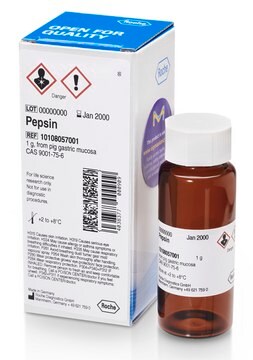ABC506
Anti-FUNDC1 Antibody
serum, from rabbit
Synonym(s):
FUN14 domain-containing protein 1
About This Item
Recommended Products
biological source
rabbit
antibody form
serum
antibody product type
primary antibodies
clone
polyclonal
species reactivity
human, rat, mouse
technique(s)
immunocytochemistry: suitable
immunoprecipitation (IP): suitable
western blot: suitable
NCBI accession no.
UniProt accession no.
shipped in
dry ice
target post-translational modification
unmodified
Gene Information
human ... FUNDC1(139341)
General description
Immunogen
Application
Apoptosis & Cancer
Apoptosis - Additional
Western Blotting Analysis: A representatitive lot of this antibody was used to detect puried FUNDC1 protein from bacteria or HeLa cell lysates (Liu, L., et al. (2012) Nature Cell Biology. 14(2):177-185).
Immunocytochemistry Analysis: A representatitive lot of this antibody was used to detect FUNDC1 in HeLa cells (Liu, L., et al. (2012) Nature Cell Biology. 14(2):177-185.
Immunoprecipitation Analysis: A representatitive lot of this antibody was used to co-immunoprecipitate FUNDC1 with endogenous LC3 in HeLa cells that were exposed to normoxic or hypoxic conditions for 24 hrs (Liu, L., et al. (2012) Nature Cell Biology. 14(2):177-185).
Quality
Western Blotting Analysis: A 1:1000 dilution of this antibody detected FUNDC1 in 10 µg of HepG2 cell lysate.
Target description
Uncharacterized bands may be visitible in some lysates.
Physical form
Storage and Stability
Handling Recommendations: Upon receipt and prior to removing the cap, centrifuge the vial and gently mix the solution. Aliquot into microcentrifuge tubes and store at -20°C. Avoid repeated freeze/thaw cycles, which may damage IgG and affect product performance.
Other Notes
Disclaimer
Not finding the right product?
Try our Product Selector Tool.
recommended
Storage Class
12 - Non Combustible Liquids
wgk_germany
WGK 1
flash_point_c
Not applicable
Certificates of Analysis (COA)
Search for Certificates of Analysis (COA) by entering the products Lot/Batch Number. Lot and Batch Numbers can be found on a product’s label following the words ‘Lot’ or ‘Batch’.
Already Own This Product?
Find documentation for the products that you have recently purchased in the Document Library.
Our team of scientists has experience in all areas of research including Life Science, Material Science, Chemical Synthesis, Chromatography, Analytical and many others.
Contact Technical Service





